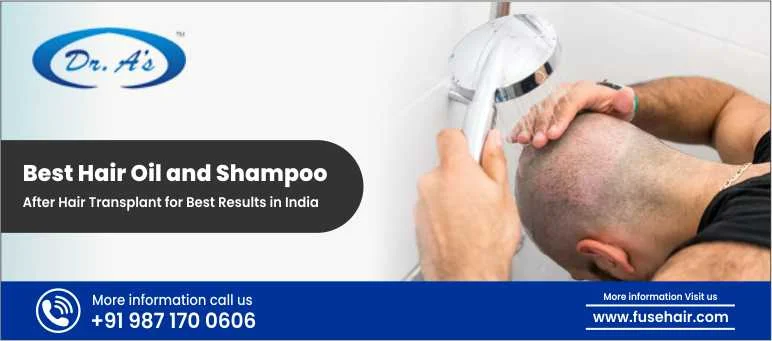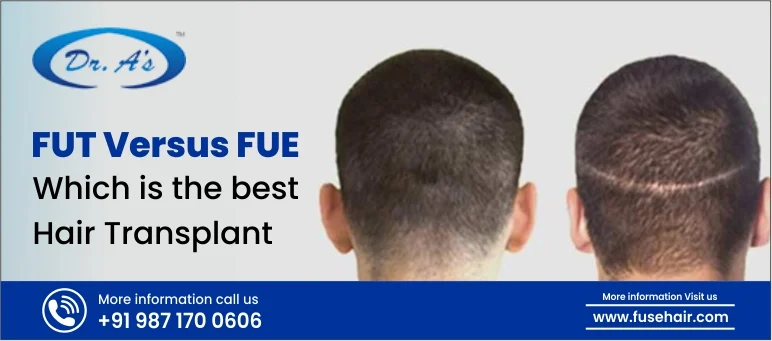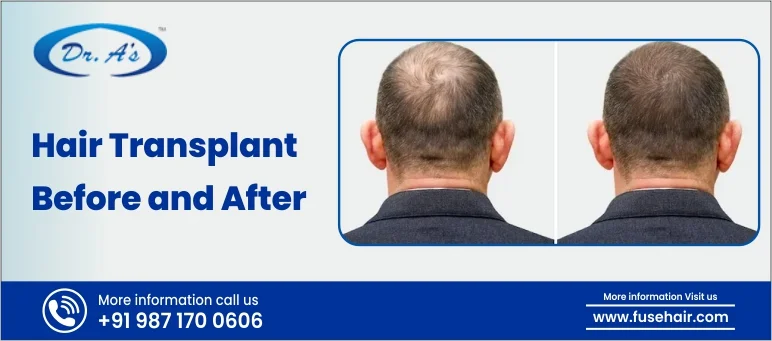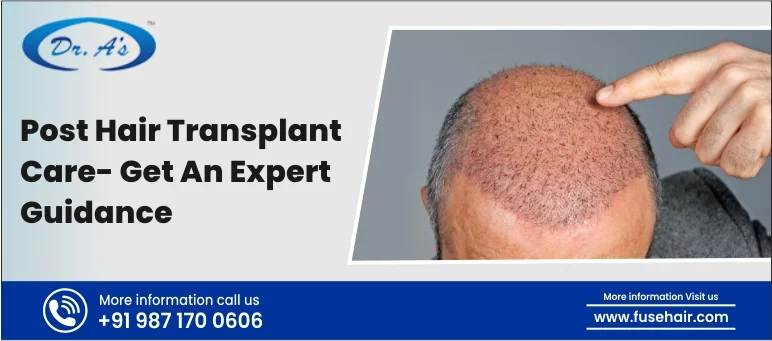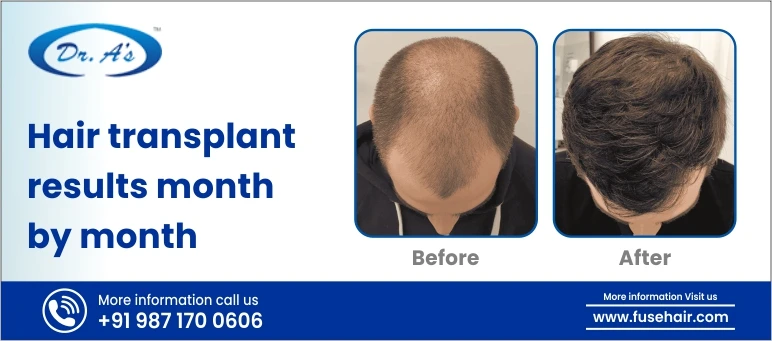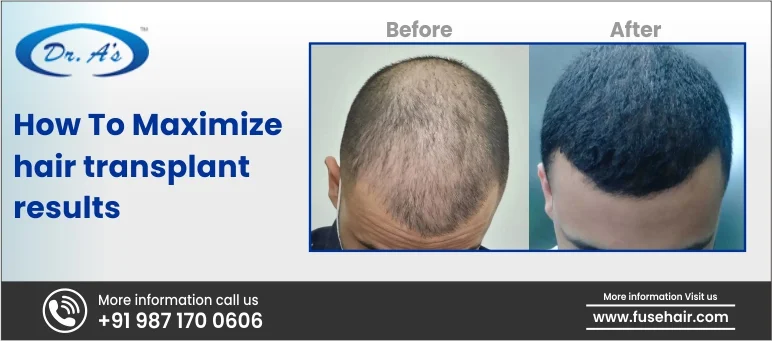
Facing hair problems is okay; but avoiding them and not treating the problem is not a good step. Hair fall, hair thinning, and other such hair problems can affect our quality of life, but thankfully, there is a solution to all of these – hair transplant. Undergoing this procedure will not only help you grow your hair back; it will also retain your youth and boost your self-confidence by providing the right coverage to all the bald spots by strengthening the hair follicles.
Moreover, you do not have to engage in complex and expensive aftercare processes after the surgery. The best benefit of getting a hair transplant, albeit, is its nature of permanence. It is a single surgical treatment that provides permanent results. Nonetheless, the success of the procedure depends on certain key factors.
This article will guide you through the effective strategies required for getting successful hair transplant results, along with some handy tips you can use to maximize its outcomes.
Understanding the Importance of Maximizing Results
From a well-defined male or female pattern baldness to hair loss resulting from cosmetic surgery, scalp injury, and scarring, an individual may have different reasons for considering a hair transplant. Regardless of cause of the issue, there is no denying that a hair transplant is the solution to it all.
Apart from producing permanent results, it also produces natural-looking results, but there is always room for more improvement, and even after you have undergone the procedure, you need to take care of certain things. From following a strict diet to sticking to an anti-infection routine, opting for the right approach with these small practices will help you make the most out of this investment. Engaging in a post-care routine can make a significant difference by enhancing your final results.
Strategies to Maximize Hair Transplant Results
Getting a hair transplant is the maiden step towards hair restoration, but to ensure that the investment will prove to be every bit worth your time and financial resources, you need to take care of the following factors.
Strategy 1: Choosing the Right Surgeon
One of the most important prerequisites to getting a hair transplant is to choose the right surgeon. It is because a specific qualification is required to perform hair transplants, and for the same, someone who is adept at choosing the right transplant method and using the appropriate tools for the same is necessary.
There are also different methods that can be used for the procedure, such as follicular unit extraction (FUE), follicular unit transplantation (FUT), and more. Each of these methods has unique characteristics that make them effective depending upon the desired results of the patient.
From ensuring precise graft placement to performing donor hair extraction, an experienced surgeon will possess the skills and expertise needed to yield long-lasting and natural-looking results using the right methods and techniques. Make sure you perform proper research before you choose a surgeon. If you’re looking for an experienced and reliable hair transplant surgeon in Delhi, Dr. Arvind Poswal will be your ideal pick.
Strategy 2: Pre-Transplant Preparation
To make sure that you gain the most effective hair transplant surgery results from the procedure, it is not only important to stress the post-care routine, but it is equally important to consider the lifestyle choices you make and the practices you follow before undergoing the surgery. It is essential to perform a preliminary study to check whether the donor area has sufficient good quality grafts for coverage of the recipient area.
While performing this diagnosis, controlling the number of follicles per graft and considering its thickness is imperative. Doing a preoperative visit to learn what foods and habits need to be avoided before the surgery can also be extremely helpful. Such a visit can also be used by the patient to express all their concerns and point out the areas that need to be prioritized while also enabling them to set their expectations of the surgery accordingly.
Strategy 3: Follow Post-Transplant Care Instructions
To make sure that the surgery can yield great outcomes, laying stress upon the postoperative care is vital to ensure proper healing of the scalp. The surgeon will share the suggestions you need to follow after the surgery, and all you have to do is make sure that you follow these instructions to ensure the transplanted hair grafts can have optimal growth.
Follow the hair care routine given by your surgeon and take the prescribed medications in a routine manner. Using a mild shampoo free from harmful chemicals to wash the hair gently is also commonly recommended. Avoiding the use of excessive heat styling is favorable as it can damage the hair. Furthermore, you must pay attention to any extra suggestions made by your surgeon to avoid any harmful impact on the hair and to promote hair growth. It is best to follow a gentle procedure when maintaining your hair during the operative period so that you can keep it at bay from any harsh chemicals and practices.
Strategy 4: Medications and Supplements
To promote hair growth, it is essential to ensure a daily dose of vitamins and nutrients along with following a healthy and balanced diet. An intake of multivitamins and foods rich in minerals can prove to be highly beneficial and can enhance the healing process to a great extent. However, before you take these medications and supplements for hair restoration, it is always recommended to follow your surgeon’s prescription or take the advice of your surgeon before you take them so that you can be sure that they are safe and can produce effective results without any side effects.
What’s more important, however, is to make sure that you are consistent with this after hair transplant practice. You should not stop taking the medications until your surgeon tells you to do so. It is always better to stick with the prescriptions and recommendations suggested by your doctor to make sure you get the best outcome.
Strategy 5: Diet and Nutrition
To achieve your desired hair transplant result, it is mandatory to make healthy lifestyle choices. Following a balanced diet that includes foods rich in nutrients and proteins, such as eggs, beans, pulses, fish, tofu, and the like, can boost your hair restoration process. However, they can work their magic only if you maintain healthy habits, too.
It suggests that you should restrain yourself from unhealthy habits such as poor nutrition, alcohol consumption, high levels of stress, smoking, and the like. This is because such habits constrict the blood vessels, thereby reducing the flow of blood to the scalp, which impacts the delivery of these essential nutrients to the follicles and restricts the growth and vitality of the hair. For better results, you can always ask your surgeon to provide you with a healthy and practical routine you can follow every day to maintain the health of your scalp and to ensure positive hair transplant results.
Strategy 6: Scalp Hygiene and Care
Taking care of your scalp and maintaining its hygiene is extremely crucial to gaining positive results from your hair transplant journey. To remove the scabs, you need to shampoo your hair regularly. Following 7-10 days of the transplant, there should not be any traces of dried blood on the scalp anymore. After the 14th day of the transplant, you may find yourself washing your hair like you normally would, and that means you can wash your hair more than once a day following the operation.
Ensure to wash the recipient area of your scalp gently every day to avoid the formation of crusts. You can also use a sponge to massage the area gently. Try to use mild products and stay away from the sun if possible, as exposure to heat can cause damage. Do not wear caps or hats for at least two weeks post-surgery so that your hair restoration process is not affected by these things.
Strategy 7: Regular Follow-Up Appointments
You may think that you can gain long-lasting and positive hair transplant results soon after the surgery, but since this is a procedure that guarantees permanence, you have to devote time to post-caring practices. This means that you need to take out the time required for regular follow-ups and appointments with your surgeon so that they can monitor your progress.
Do not neglect these follow-up meetings because this is when your surgeon will help you make adjustments by acquainting you with different tips on how you need to wash your hair, which products you need to use, what kind of a diet you should be following, and what supplements and medications you should be taking. Having a good knowledge of all these things will help you adopt the right approach for the post-operative care of your hair health and will maximize your hair restoration results to a great extent.
Strategy 8: Stress Management
Once you are done and dusted with your hair transplant procedure, it is always suggested to take some downtime to breathe and relax. Taking some time to reduce your stress levels after the surgery is always a good idea because stress is one of the main causes of hair problems. You can manage many of these stressful situations by counting to ten while breathing or taking long and deep breaths whenever you feel like things are getting a little too much to handle.
You may also be worried that your hair transplant is looking very obvious, and hence, you may not have the confidence to show up at work immediately, but you always have the choice to take a week off, wind down, and become a part of the healing process wholly. You can also talk to your surgeon for some warm company and helpful suggestions to help you go through the post-operative process without any hassle and stress-free.
Conclusion
From using the right hair care products to following a proper diet, it is essential to emphasize the tips and strategies given above so that you can maximize your hair transplant surgery results effectively. It will help you achieve your desired results and complement your hair restoration with a natural look. You can always improve your hair transplant results with the right approach by making sure that you opt for the right practices, such as the ones mentioned above, for the best post-operative care.
For the best hair restoration and transplant, you can consult Dr. Arvind Poswal. With more than 20 years of experience in performing FUE, FUT, and other types of hair transplants, he strives to offer you effective and long-lasting results. Dr. Poswal also offers detailed post-surgery guidelines for quick recovery.
Frequently Asked Questions
-
Can I speed up the growth of transplanted hair by using specific products?
Yes. Medications like Finasteride and Minoxidil have been proven to promote hair growth while preventing hair loss. After having a hair transplant, you can use either of these medicines to boost the growth of hair.
-
Is it possible to have a second transplant for even better results?
Yes, people often get a second hair transplant for increased density if there is an availability of sufficient donor grafts for the transplant. The procedure will be identical to the first transplant, and it will leave scarring.
-
How long does it take to see the final and complete results of a hair transplant?
The complete results of a hair transplant may vary among individuals depending upon the post-operative care and lifestyle choices, but 50% of hair regrowth is visible at six months, 80% is visible after 8-9 months, and 100% is visible after 12 months.
-
Can lifestyle changes like quitting smoking have a significant impact on hair transplant results?
Yes, quitting smoking can have a significant impact on the result of the hair transplant because smoking tightens the blood arteries and increases hair loss. As such, the nutrients and oxygen required by the hair follicles for growth are not delivered. Hence, by quitting smoking, these issues can be eliminated.
-
Are there specific strategies to prevent grafts from falling out after a transplant?
Falling of grafts is a rare occurrence after the hair transplant after fourteen days because they become more secure. This is often referred to as ‘shock loss’. You can always manage the same by consulting your hair transplant surgeon and asking for prescribed recommendations.

